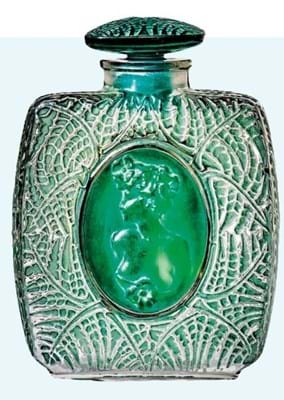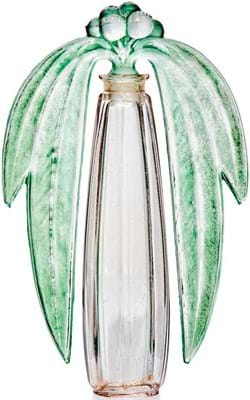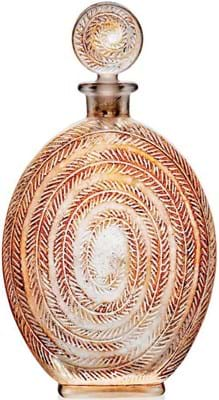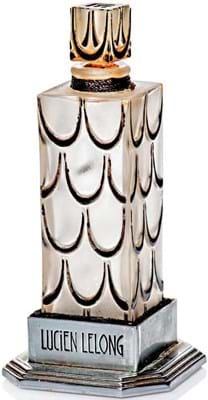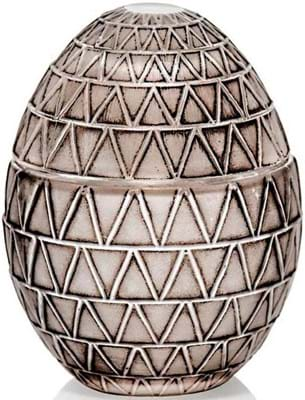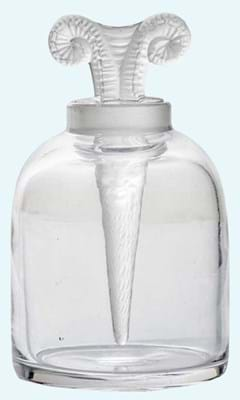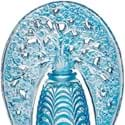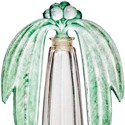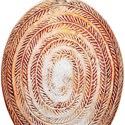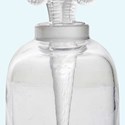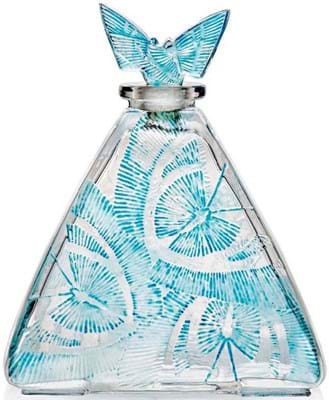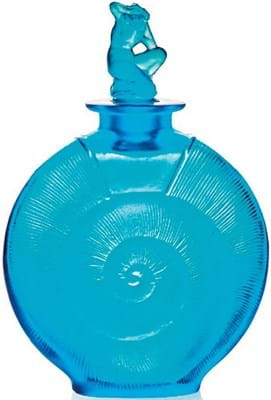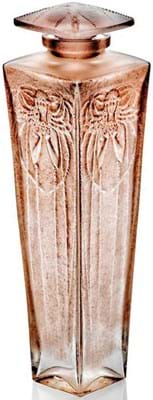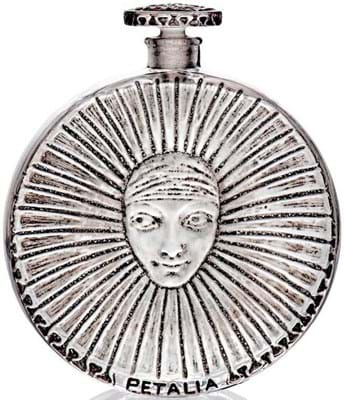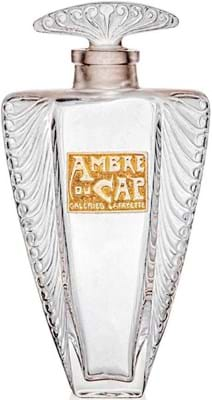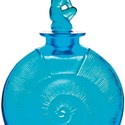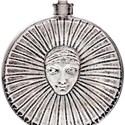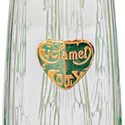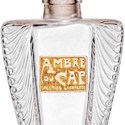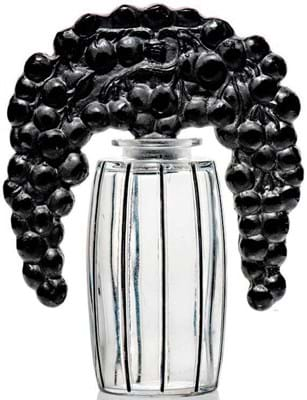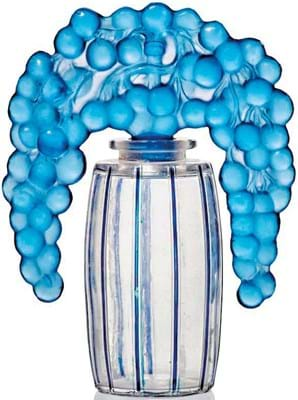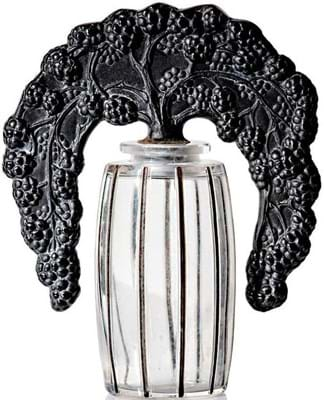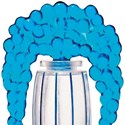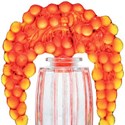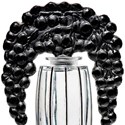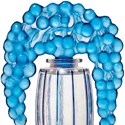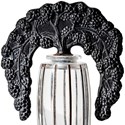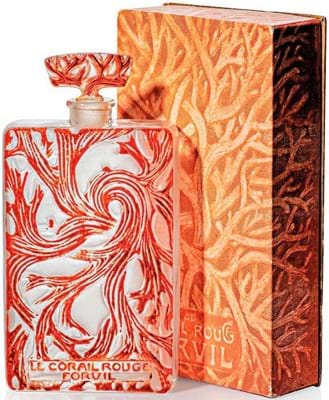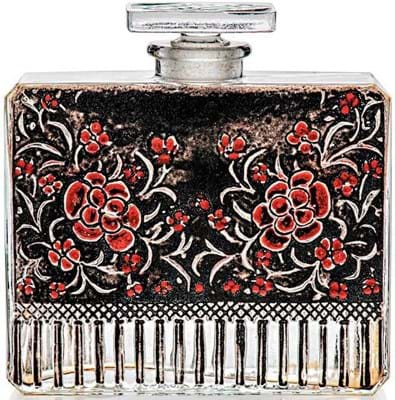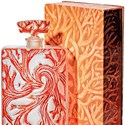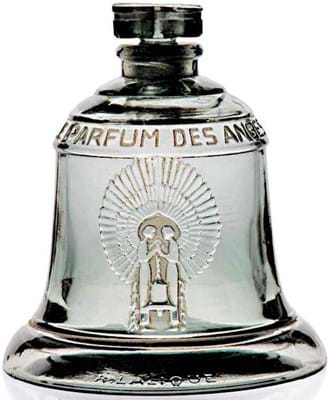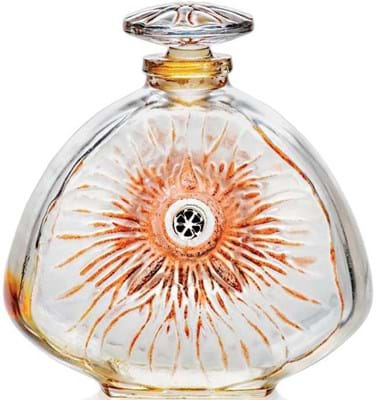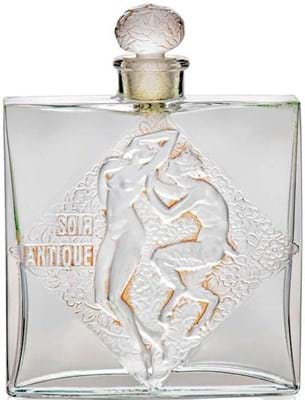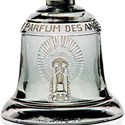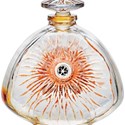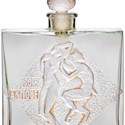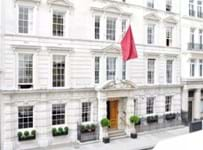It was in the early 20th century that René Lalique turned his attention from handmade jewellery to making glass by industrial methods.
Some of his first creations were for the perfumier François Coty, his neighbour on the place Vendôme in Paris, who believed success in the fragrance business lay in beautiful packaging and an affordable price.
Ever since Lalique designed the Cyclamen bottle for Coty in 1909 (previously most scent was sold in quite standard cylindrical clear glass vials) the perfume industry has invested heavily in bespoke packaging. Ultimately Lalique designed bottles for more than 60 perfumers, fashion houses and department stores plus bottles for his own Maison Lalique brand.
According to Les Flacons Lalique a Parfum (1986 with 2001 addendum) by Mary Lou and Glenn Utt, approximately 400 models were made during the René Lalique period (there are many modern issues too). They range in price from the low hundreds to deep into five-figures.
The record for a Lalique perfume bottle is held by one of the designer’s early cire perdue creations – a teardrop-shaped bottle with bronze stopper titled Sirenes. At a sale held by Est-Ouest in Tokyo in 2012 it took Y25m – something close to £250,000 at the time.
Private collection
An exceptional private collection of 150 Lalique perfume bottles proved a near sell-out at Lyon & Turnbull’s live online auction on February 17.
Many bottles brought record sums as the collection, assembled over a number of years by a collector who had long fallen under the spell of René Lalique, sold for a premium-inclusive total of £658,000. The aggregate was more than double the pre-sale estimate with the selling rate a near faultless 96%.
“It is a rare occurrence for a collection of Lalique scent bottles of this calibre and scale to appear on the market,” said specialist Joy McCall. “The results are testament to the quality of the collection. Participation in the sale came from a broad international audience and it was lovely to meet so many new clients with a passion for Lalique.” This audience included buyers from all of the traditional Lalique collecting hotspots – UK, US, France, Japan, South Africa and Canada – plus others from the overlapping sphere of perfume bottle collecting.
The bottles made for the Maison Lalique brand are typically the firm’s most ambitious creations. Most were offered at the time in the multiple colour treatments or finishes that have a significant bearing on pricing today This collection included, for example, four versions of the 1920 Amphitrite bottle formed as a coiling shell with a sea goddess stopper. They sold for prices between £1300 (green) to £3400 (electric blue).
The Bouchon Cassis bottle, also designed in 1920, with its ‘tiara’ stopper formed of cascading bunches of grapes was also offered here in different colours guided from £2000-9000. They sold for sums between £4200 (orange) to £15,000 each for bottles in clear blue and black.
Two colour variants not offered here were versions in green (one took $25,000 at the New Jersey saleroom Rago in 2015) and opaque baby blue ($36,000 at the annual Perfume Bottle Auction in New York in 2017).
Fougères is French for ferns but it also the name given to one of the main fragrance families. It was the perfect subject for a bottle Lalique designed in 1912 that featured, front and back, medallions of a bust length female nude within a border of fern leaf fronds. The model is known in several configurations – this one in clear, frosted and jade green glass. Another took €10,500 at Tessier- Sarrou in Paris in 2011 but this one took £22,000. “Fougères was one of my favourite bottles in the collection and it brought a wonderful result,” commented McCall.
The same sum of £22,000 was paid for a technically challenging bottle that again survives in only small numbers. The complex Althea bottle designed in 1911 was probably never put into full production. Made in clear glass with sepia staining and black enamel highlights, it was seemingly created in two sizes. The sale of the Mary Lou and Glenn Utt collection in New York in 1998 included an 8cm bottle but the example here was the larger 12cm version. Another made €30,000 at Lombrail-Teucquam in Paris in 2011.
Perfume packaging
While the Maison Lalique bottles typically hold the greatest aesthetic appeal, this collection included some of the hardest to find vessels – many of them the more ‘disposable’ pieces made for French and American perfumiers in the 1920s. McCall said the collection was “formed in equal measure by a great passion for the subject and the thrill of the chase when searching for the rarest bottles”.
As the rate of survival is much lower, some of these can get very expensive indeed. The auction high for a ‘commercial’ Lalique bottle appears to be the €61,000 bid at Coutau-Bégarie in Paris in 2010 for a triangular-shaped vessel listed in the catalogue raisonné under the name Striures (striations). The surviving label and original box confirmed for the first time it was made for perfumer Isabey’s Jasmin scent.
The collection at L&T included a seldom-seen bottle with the Spirale Fougère (spiral fern) design in clear, frosted and sepia stained glass sold at £14,000. Now known in the literature as HC 12, it was created by Lalique in 1925 for an unknown perfumer for a product that was probably never marketed. Another (it might well have been this example) took €6000 at Tessier-Sarrou in Paris in 2011.
The Ambre du Cap scent bottle was designed 1920 for Volnay (founded in 1919 by René Duval) and later supplied to luxury Paris department store Galeries Lafayette. Made in clear, frosted and sepia stained glass, most examples lack the applied gilt paper label for Lafayette still affixed to this bottle. It was estimated at £1500-2000 but sold at £16,000. “This was the result in the sale which most surprised me. I knew it was a rare bottle but had not anticipated such a frenzied bidding war for it,” said McCall.
The miraculous survival or century-old labels and packaging can carry a significant premium.
Sold at £14,000 was Le Corail Rouge (Red Coral), a vessel designed in 1922 for the launch of the Forvil perfumery. Founder Léo Fink became a regular customer of Rene Lalique who designed both his packaging and shop displays. Remarkably, this clear, frosted and red enamel bottle came with its original card box, so often discarded a century ago.
“I sold an example of this bottle in 2018 for £7500 without a box and it was lovely to see the way the enamelled design on the bottle is mirrored in the packaging,” observed McCall. “It shows, too, just how much the survival of an original box can influence the price.”
Another of the most admired lots in the sale was the Petalia bottle featuring a central design of the face of a Pierrot. This 1923 bottle in clear, frosted and grey stained glass was made for the American cosmetics magnate Ewing Virgil Neal, founder of the brand Tokalon, and used to house two fragrances Petalia and Captivant de Tokalon.
“It was the first time I have offered one for sale in three decades of selling Lalique and it didn’t disappoint selling at £20,000,” said McCall. Another example sold for €16,000 at Coutau-Begarie in 2005 while one with its original packaging surfaced at Lucien in Paris in 2008 and took €8500.
The Oviatt department store in Los Angeles was completed in 1927 – its interiors featuring Lalique glass panels. To mark the opening of the building, and the launch of the scent Le Parfum des Anges, Lalique created a small bell-shaped perfume bottle incorporating the seal of the City of Los Angeles and the name of the product within the design. An example here in grey and sepia stained glass sold for £14,000, way above the £500-700 estimate. The same bottle in clear glass with its original packaging sold at £2000, while a slightly later variant with a single bar stopper and without the words Le Parfum des Anges was a more affordable £700.



